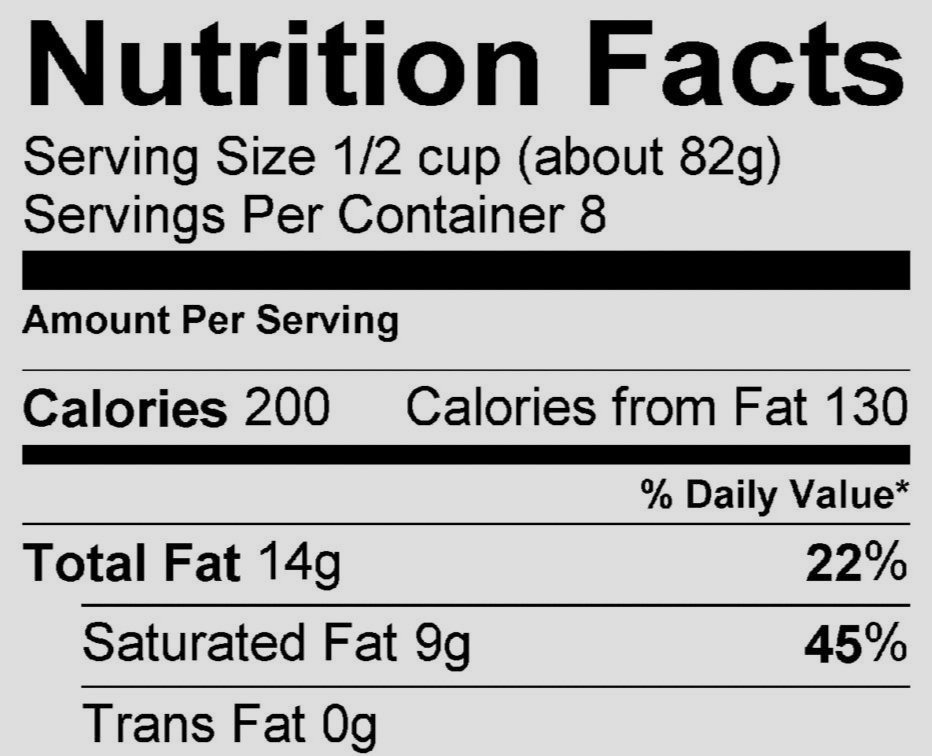How to read a nutrition label
Food labels are confusing. Here are some basic guidelines
Calories: you probably should be aiming to eat around ~2,000 a day. However this number will vary depending on age, sex, your level of physical activity, and whether your are trying to lose weight. Typical minimum recommendations are below:
Calories
Total fat: The Food and Drug Administration continues to include this on the panel despite the consensus of the nutrition community that the type of fat is more important. Experts recommend that you skip total fat on the label and focus on minimizing saturated fat (as low as you can go) and trans fat (avoid altogether).
Saturated fat: less than 20 grams. In addition to trying to keep this number as low as possible,it's important what you replace it with: Aim for healthy (unsaturated, non animal) fats, whole grains, fruits and vegetables. In the past, a focus purely on reducing saturated fat without attention to what it was being replaced with led Americans to substitute unhealthful processed carbohydrates.
Trans fat: 0 grams. Trans fats are considered unsafe.
Sodium: While the Daily Value is 2,300 mg, many experts would lower this goal to 1,500 mg, especially for those with high blood pressure. This is about 2/3 of a teaspoon of salt. The average American has 3,400 mg of sodium a day. Over 70 percent of sodium intake comes from food eaten away from home (processed or prepared foods from the grocery store, or food from restaurants). Along with added sugar, this is one of the most important things to check on the Nutrition Facts panel. The major sources of salt in the American diet are
Breads and rolls
Pizza
Sandwiches
Cold cuts and cured meats
Soups
Burritos and tacos
Savory snacks such as chips, popcorn, pretzels, snack mixes and crackers
Chicken
Cheese
Eggs and Omelets
Cholesterol: There is less of a focus on cholesterol now than in the past because of the belief that other nutritional factors have a greater effect on blood cholesterol. However there is evidence that excessive intake of cholesterol is not healthful.
Carbohydrates: Not all carbohydrates are created equal. You can’t tell from the Nutrition Facts panel how many whole grains servings are in a product, so your best bet is to check the ingredients list to see if the first ingredient is a whole grain, such as quinoa, whole grain oats, brown rice, whole-wheat flour, etc. The remaining carbohydrate content includes naturally present sugar (such as that found in milk and fruit), added sugar sweeteners (aim low) and dietary fiber (aim high).
Dietary fiber: 28 grams. The vast majority of Americans get far too little. It is reassuring if the number of grams of dietary fiber is more than 10% of the total number of grams of carbohydrates.
Added sugar: These are sugars added to foods in their preparation to make them sweeter. While the Daily Value used on the label is 50 grams, the American Heart Association recommends keeping it to 25-36 grams per day as below:
Men: 9 teaspoons = 36 grams = 150 calories
Women: 6 teaspoons = 25 grams = 100 calories
The average American consumes 82 grams daily. Sodas are often heavily sweetened. For example, a typical 12 oz. can of Coca Cola has 39 grams of added sugar, more than an entire day’s limit. These added sweeteners can have innocent sounding names, like “honey nut” or “corn syrup.” Even healthy sounding foods like energy bars or yogurts are often sweetened.
Protein: Dietary protein deficiency is very rare in those with a balanced diet. Even vegetarians can satisfy their protein needs from legumes such as beans, peas, soybeans, nuts, and seeds, whole grains, leafy vegetables, eggs and dairy products.
Keep in mind that manufacturers will often tout the healthier components of their products on the box. You may be told of the fiber content, the absence of trans fat or cholesterol, the presence of iron, or even that the food is “heart healthy.” The nutrition label will give a more complete picture.

